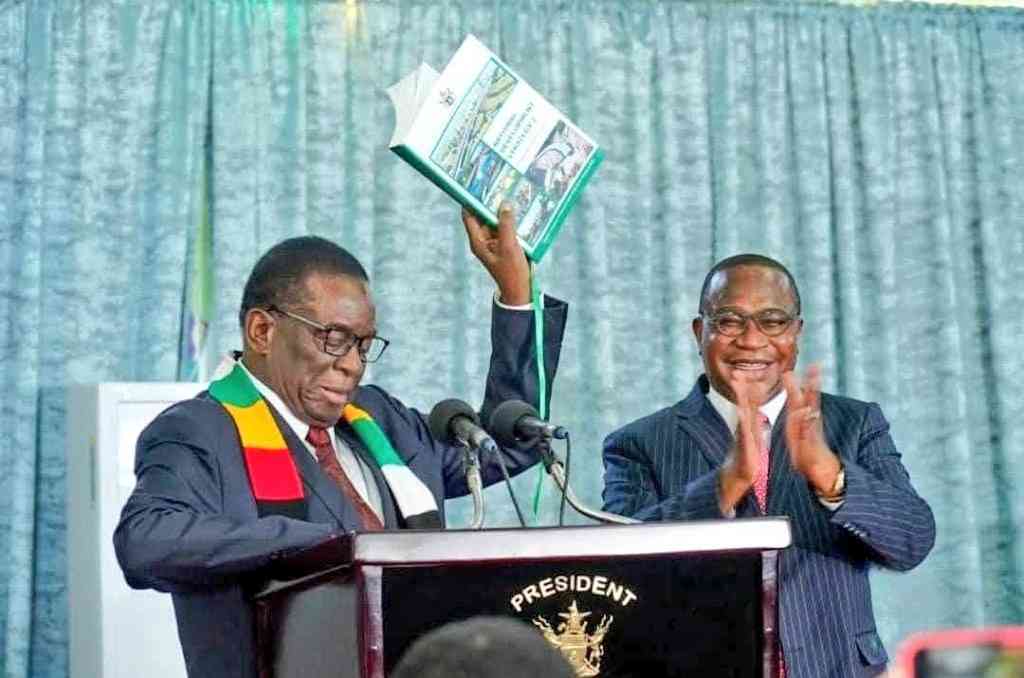
THE Mutapa Investment Fund (Mutapa) is targeting to raise more than US$1 billion to support the implementation of the National Development Strategy (NDS) 2, as government eyes a gross national income (GNI) of US$4 900 per capita by 2030.
In February, Mutapa disclosed that its portfolio carries assets worth over US$20 billion, drawn from more than 20 state-owned enterprises (SOEs) under its management.
These include mining companies, agricultural entities, power utilities and financial services firms.
On the strength of this portfolio, Mutapa is expected to mobilise at least US$1 billion to back priority programmes under NDS 2, which was launched yesterday. The blueprint covers the period 2026 to 2030, during which Zimbabwe aims to transition into an upper-middle-income economy.
“During NDS 1, Mutapa Investment Fund was fully operationalised under the Sovereign Wealth Fund of Zimbabwe Act [Chapter 22:20] to anchor establishment of a National Stabilisation Fund in support of funding national development objectives underpinned by unlocking the commercial value of state-owned enterprises, thereby securing wealth for future generations,” the NDS 2 document reads.
“The Fund targets to raise over US$1 billion to support NDS 2 programmes that uplift the livelihoods of the people.
“The Mutapa Investment Fund is mandated to make strategic investments that align with NDS 2, aiming for long-term value creation while generating sustainable financial returns and promoting positive social and environmental outcomes.”
According to the document, Mutapa will leverage the grouped balance sheet of the more than 30 SOEs transferred from line ministries to the Fund to mobilise capital during the NDS 2 period.
- Vision 2030 needs structural reforms: CZI
- AFC secures US$28m from Mutapa
- Mutapa targets over US$1 bn in capital over NDS 2
Keep Reading
Proceeds from the revitalisation of its portfolio, through dividends, asset disposals and bond issuances, will also be channelled towards foreign currency reserve accumulation.
“Already, comprehensive valuation of assets conducted as of June 2024 through reputable local and international accounting firms indicated a gross asset value of US$16 billion,” the NDS 2 document reads.
“Mutapa Investment Fund will, during NDS 2, be required to leverage these assets to raise capital to invest and grow investible surpluses under the Sovereign Wealth Fund.
“The Mutapa Investment Fund will be required to undertake comprehensive performance audits of portfolio companies under their ambit and benchmark with a view to restructuring, undertaking governance reforms, enhancing financial viability and eventually listing on stock markets.”
As Mutapa improves the performance of its entities, government expects the Fund to increase its contribution to the fiscus, drive job creation, boost export earnings and improve service delivery.
This will be supported by Mutapa’s mandate under NDS 2 to engage both local and international investors to inject capital into underperforming state enterprises, thereby reducing fiscal risks and limiting the burden on the national budget.
“Government will continue to enhance the transparency of the Fund through regular public reporting, also benefiting from the fund`s membership of the continental African Sovereign Investors Forum,” the NDS 2 document reads.
“This also enhances credibility of the Fund, facilitating tapping into investment opportunities and mitigating risks, among other benefits.”
The review of NDS 1 shows that Zimbabwe’s GNI per capita is estimated to have risen to US$3 242 in 2025, sustained by an average annual real economic growth rate of 5,6% over the 2021–2025 period.
The growth was anchored by recovery in agriculture, strong mining output and reduced inflation supported by greater exchange rate stability.
“Building on this faster than expected rebound of the economy, NDS 2 interventions for economic structural transformation through investment across value chains for the realisation of sustainable inclusive growth aim for the attainment of overall annual average real economic growth rates in excess of 5%,” the NDS 2 document states.
“This is projected to yield gross national income per capita of over US$4 000 by 2028, rising to an estimated US$4 900 by 2030.”









